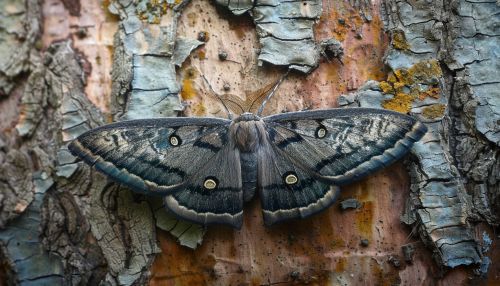Industrial melanism
Introduction
Industrial melanism is a term used in the field of evolutionary biology to describe the evolutionary process whereby the population of a species changes in response to pollution. It is a classic example of microevolution in action and has been extensively studied, particularly in the context of the peppered moth.
Definition and Overview
Industrial melanism is defined as the increase in frequency of dark-colored varieties in animal populations in industrial regions. This phenomenon is a direct result of the process of natural selection, where individuals with traits that increase their survival and reproductive success are more likely to pass on their genes to the next generation.
Historical Background
The phenomenon of industrial melanism was first documented during the Industrial Revolution in the 19th century. During this period, many areas in England and other parts of Europe underwent rapid industrialization, leading to significant environmental changes. The most notable of these changes was the increase in air pollution, particularly in the form of soot and smoke from factories. This led to the darkening of the environment, including the surfaces of trees and buildings.


The Case of the Peppered Moth
The most famous example of industrial melanism is the case of the peppered moth (Biston betularia) in England. The peppered moth has two main color forms: a light, speckled form and a dark, melanic form. Prior to the Industrial Revolution, the light form was more common as it was better camouflaged against the light-colored lichens that covered the trees where the moths rested. However, as the trees became darkened by soot, the dark form of the moth became more common as it was now better camouflaged against predators.
Mechanism of Industrial Melanism
The mechanism behind industrial melanism is natural selection. In polluted environments, dark-colored individuals have a higher survival rate as they are less likely to be predated due to their better camouflage. As a result, these individuals are more likely to reproduce and pass on their genes, leading to an increase in the frequency of the dark color form in the population.
Evidence and Research
Numerous studies have provided evidence for the occurrence of industrial melanism and its underlying mechanism. These include field studies, laboratory experiments, and mathematical modeling. The results of these studies have greatly contributed to our understanding of natural selection and evolution.
Criticism and Controversy
Despite the overwhelming evidence, the case of the peppered moth and industrial melanism has been subject to criticism and controversy. Some critics argue that the evidence is not conclusive and that other factors may have contributed to the observed changes in the moth populations. However, the majority of scientists in the field maintain that industrial melanism is a valid and important example of natural selection in action.
Relevance to Modern Times
Industrial melanism remains relevant in modern times as it provides a clear example of how human activities can impact the natural world. It also serves as a warning of the potential consequences of pollution and environmental degradation.
